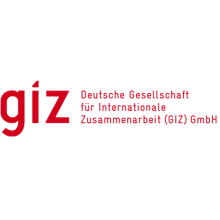Resource information
Land is a scarce resource increasingly affected by the competition of mutually exclusive uses. Fertile land in rural areas becomes scarcer due to population growth, pollution, erosion and desertification, effects of climate change, urbanization etc. On the remaining land, local, national and international users with different socioeconomic status and power compete to achieve food security, economic growth, energy supply, nature conversation and other objectives. Land use planning can help to find a balance among these competing and sometimes contradictory uses.
Since the 1990s land use planning is an important topic in the context of German development cooperation in rural development. The Deutsche Gesellschaft für Internationale Zusammenarbeit (GIZ)* GmbH has contributed significantly to the exchange of knowhow and the development of concepts and tools. Experiences of a high number of partner countries have been evaluated systematically and integrated in the concept development resulting in the land use planning guiding principles published in 1995. Land use planning was understood and still is as a social process that aims at a sustainable land use and balance of interests in rural areas.
Not only the underlying conditions but also technologies, especially in the fields of remote sensing and geographical information systems (GIS), have changed significantly since the 1990s. Both changes had an impact on the methodologies applied in land use planning. These technological and methodological developments as well as new development challenges such as climate change and increasing competition on land and the subsequent new fields of application for land use planning made a general review of the existing land use planning guideline necessary. During the past decade some concept developments have already taken place such as land use planning for disaster risk reduction or land use planning in the context of decentralization. They are now integrated in the present publication.
The present manual has been prepared by an interdisciplinary group of experts with land use planning experiences in Africa, Asia, Europe and Latin America. Many of them had already been involved in the preparation of the first guide, others have newly joined the land use planning discussion coming from new fields where land use planning nowadays is applied.
The guide is based on the previous publication of the Deutsche Gesellschaft für Technische Zusammenarbeit (GTZ) GmbH of 1995 and enriched with many recent examples of land use planning in a much broader context than in the past. It also includes technologies that have not been available at that time or only in a limited way. Based on a preparatory study in 2008, an experts meeting in 2009 defined targets, contents and structure of the publication. More than 50 experts contributed to the preparation of the present manual.
Parallel to the process at GIZ, land use planning has also been discussed by UN organizations, specifically by FAO and UNEP. In the 1990s, land use planning was also treated extensively in science and research. These concept developments and findings have been carefully considered while preparing the present manual. The guide has been prepared for local as well as international, senior and junior professionals involved in rural development in developing countries who are interested in learning more about land use planning and integrating relevant concepts of land use planning in their development work. Unlike the first publication, the present one does not only focus on methods, strategies and tools but also includes a wide range of applications for land use planning with concrete examples.


